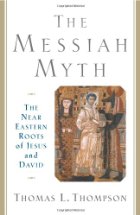*
Is Jesus Based on Pagan Precedents?
.
COVERED IN THIS POST:
- A cult of parallels
- Comparing Apollonius of Tyana
- Kersey Graves as punching bag
- Compare John Remsburg
- Evaluating a range of different parallels
- Birth of Mithras
- Water into wine by Dionysos
- Horus the shepherd-king
- Isis and Horus, Mother and Child
- Do Christian fathers give accurate knowledge of the mysteries?
- Justin, Tertullian
- Celsus via Origen
- Cultural differences
- Divine copulation or virgin birth
- Variant forms of resurrection
- Dying for sin
- The pre-Gospel record contains no biographical parallels
- Paul’s soteriology dependent on pagan concepts
- The “cult of parallels” only arises with the Gospel story
- Robert Price’s “mythic hero” archetype
- Leaving a mark on history
- Homer, Confucius, Lao-Tze, Buddha, William Tell, Aeneas, Romulus, Remus . . .
.
* * * * *
Claim 4: The Nonhistorical “Jesus” Is Based on Stories About Pagan Divine Men
(Did Jesus Exist? pp. 207-218)
.
Bart Ehrman now addresses what is undoubtedly the most controversial aspect of mythicism, or at least of some expressions of it. It forms very little of my own case for a mythical Jesus and I admit that this whole area must be approached with caution and qualification. One might call it “a cult of parallels.”
As Ehrman puts it,
. . . now rather than arguing that Jesus was made up based on persons and prophecies from the Jewish Bible, it is claimed that he was invented in light of what pagans were saying about the gods or about other “divine men,” superhuman creatures thought to have been half mortal, half immortal. (DJE? p. 207)
.

Comparing Apollonius of Tyana
He gives as an example the career of Apollonius of Tyana, an ancient sage who was reputed to have had a miraculous birth, gathered disciples, taught a spiritual ethic, healed the sick, was in part divine, and after death at the hands of authorities came back to appear to his followers.
Apollonius is perhaps not the best analogy to offer in these circumstances, since he was a figure who apparently lived not prior to or even contemporaneous with the reputed Jesus, but a little after him (he is supposed to have died 98 CE). So there can be no question that early Christians modelled their Jesus on Apollonius. But he does represent a class of ‘divine man’ (the theios anēr) in the ancient world, including much older figures of dubious existence like Heracles, some of whose characteristics the story of Jesus shared.
Ehrman claims quite legitimately that such comparisons with someone like Apollonius of Tyana have little if anything to do with the question of Jesus’ existence. Since Apollonius himself is almost certainly an historical figure (we have a little better attestation to his existence than we do for Jesus), this shows that historical persons can acquire extensive legendary characteristics. But what of those figures who are generally not judged to be historical, more god than man, incarnated to earth in an undefined or primordial past?
.
Trotting out Kersey Graves

Here Ehrman latches onto the very worst and most notorious expression of parallel-hunting in the history of mythicism: Kersey Graves’ 1875 The World’s Sixteen Crucified Saviors. Poor Kersey has become the favorite punching bag of historicists, much of it due to his own fault. Ehrman styles his work as “an exaggerated set of mythicist claims” with some justification, but his own remark that
Graves provides not a single piece of documentation for any of them. They are all asserted, on his own authority. (DJE? p. 211)
is itself an exaggeration. Graves’ references are anything but exact or even useful, but he is not quite appealing to his own authority when he says things like: “Their holy bibles (the Vedas and Gita) prophesy of [Chrishna] thus,” and goes on to quote several sentences from those bibles (1960 reprint, p.297). Graves hardly made up these passages himself. Continue reading “25. Earl Doherty’s Response to Bart Ehrman’s Case Against Mythicism — Part 25”




